All the plants in this post were photographed during the second half of April and the first days of May 2021 in the seaside areas around Medulin, my hometown, and the village called Liznjan, about 4 - 5 kilometers from where I live.
What follows it's a collection of local plants with a bit of basic information found in the old books and on the Internet. Since this is a product of my springtime ramblings, the majority of the species shown here are in bloom.
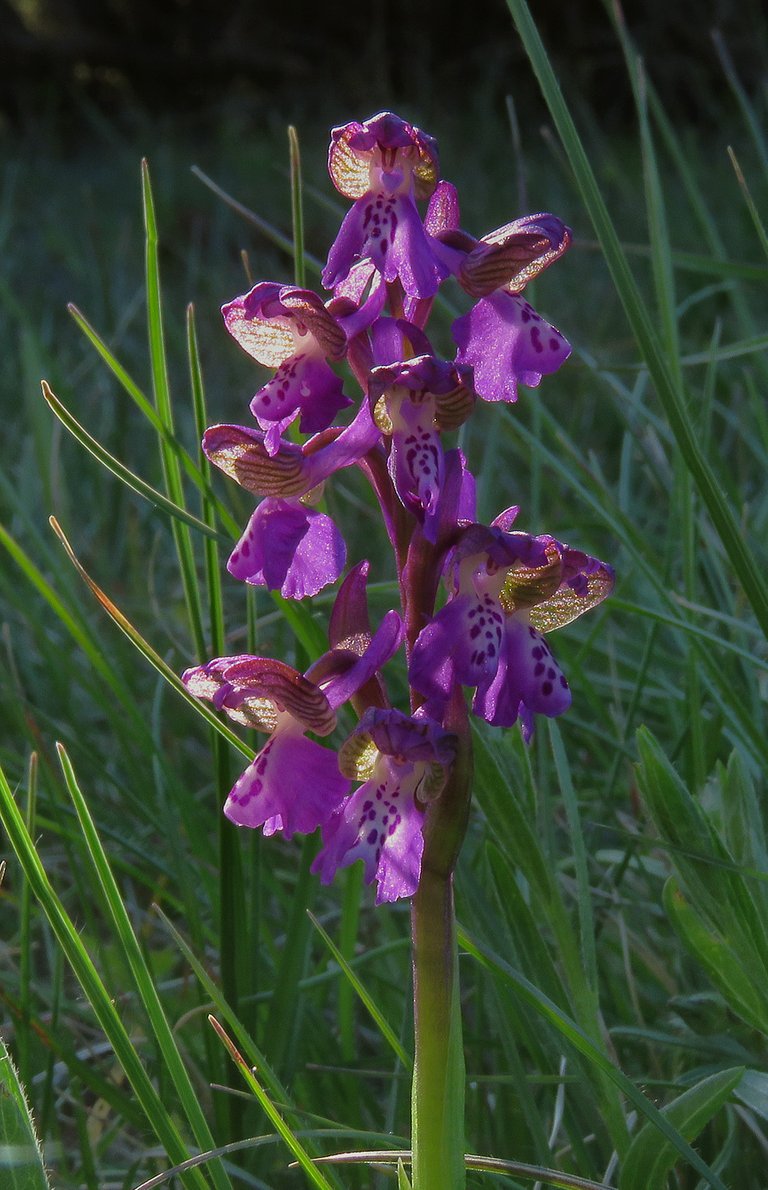
This is the Anacamptis morio, commonly known as the Green-winged orchid- These flowers do not produce nectar but are able to attract and trick the pollinators with their visual appearance. This plant cannot grow, or more precisely - cannot establish, without a symbiotic relationship with some species of fungi. That makes it vulnerable to some fungicides and fertilizers that don't affect most of the other plants in the same habitat. When it comes to preservation, the official status of this species is Vulnerable in some places, Threatened in others.
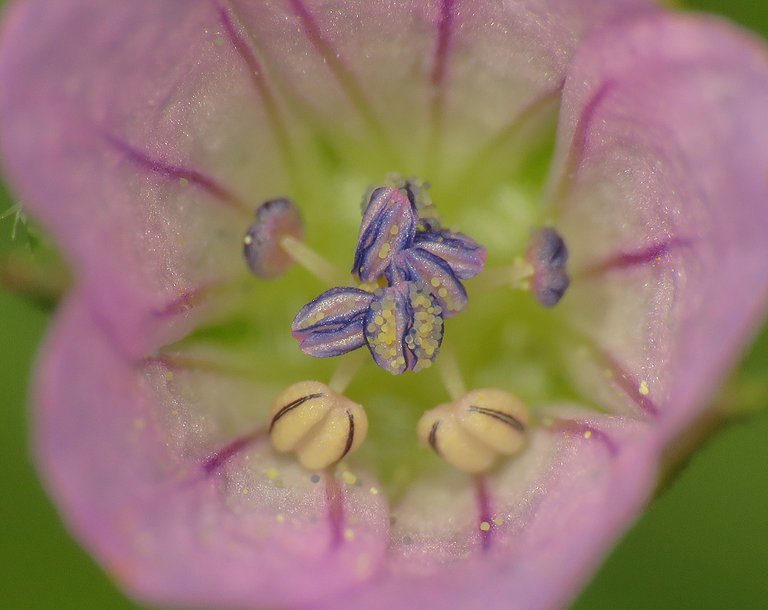
Here you can see the interior and the tiny pollen grains ...
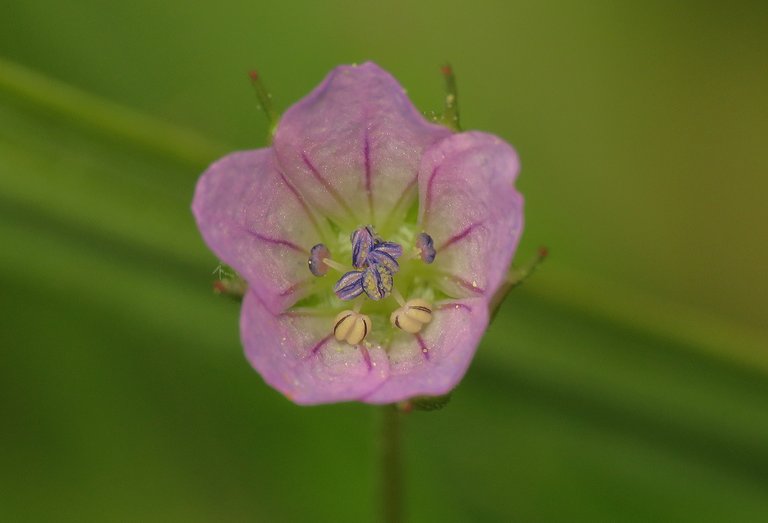
... of the Geranium columbinum flower.
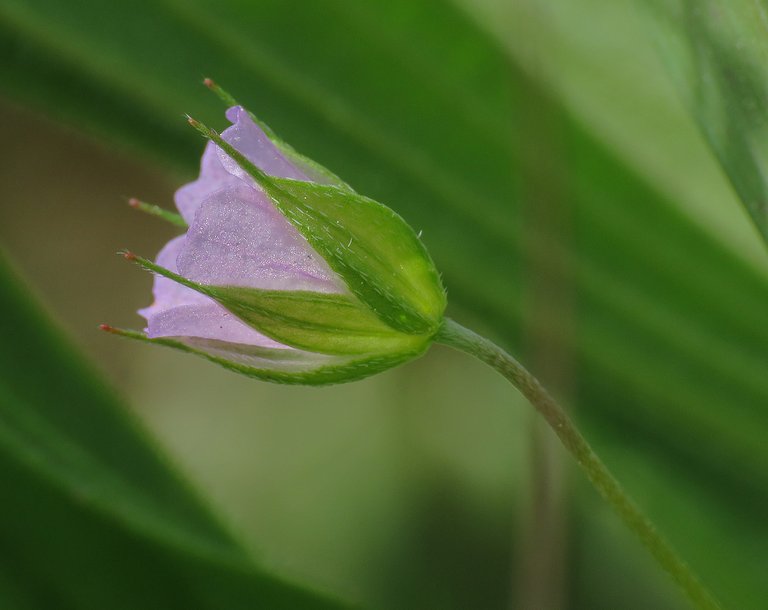
This plant is commonly known as the long-stalked crane's-bill. It prefers calcareous soil and often grows on the meadows near the sea.
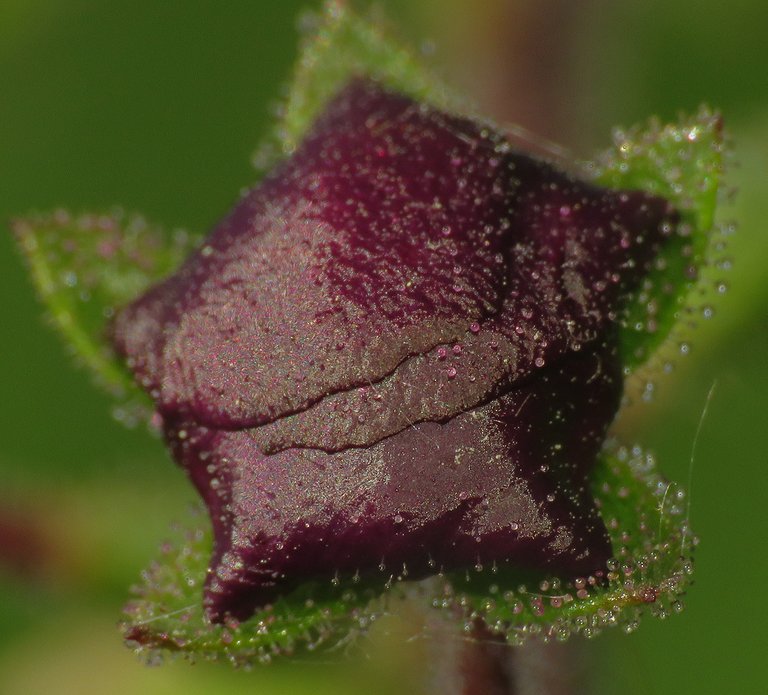
This mysterious pentagonal thing ...
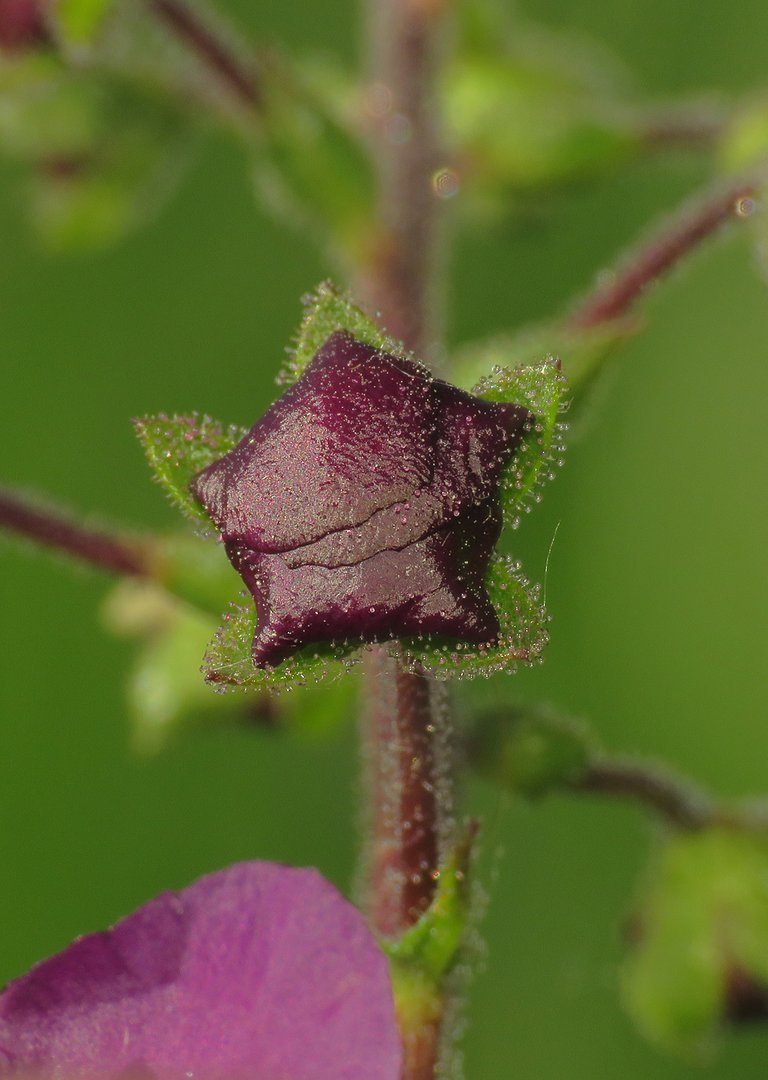
... will soon unfold into a flower ...
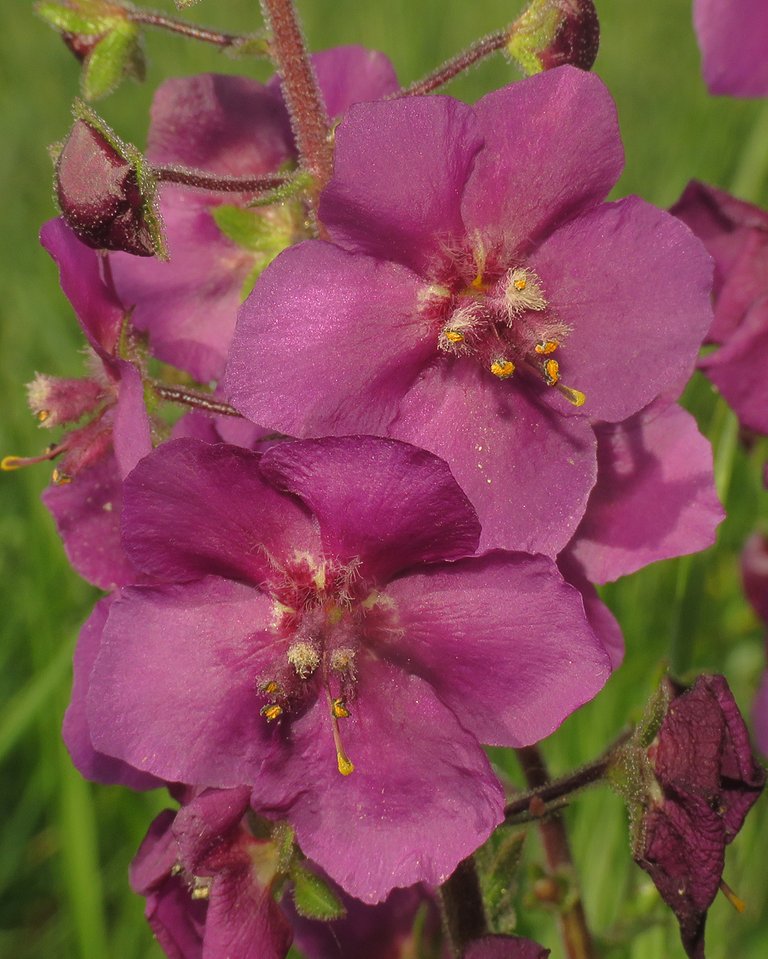
... the Verbascum phoeniceum flower.
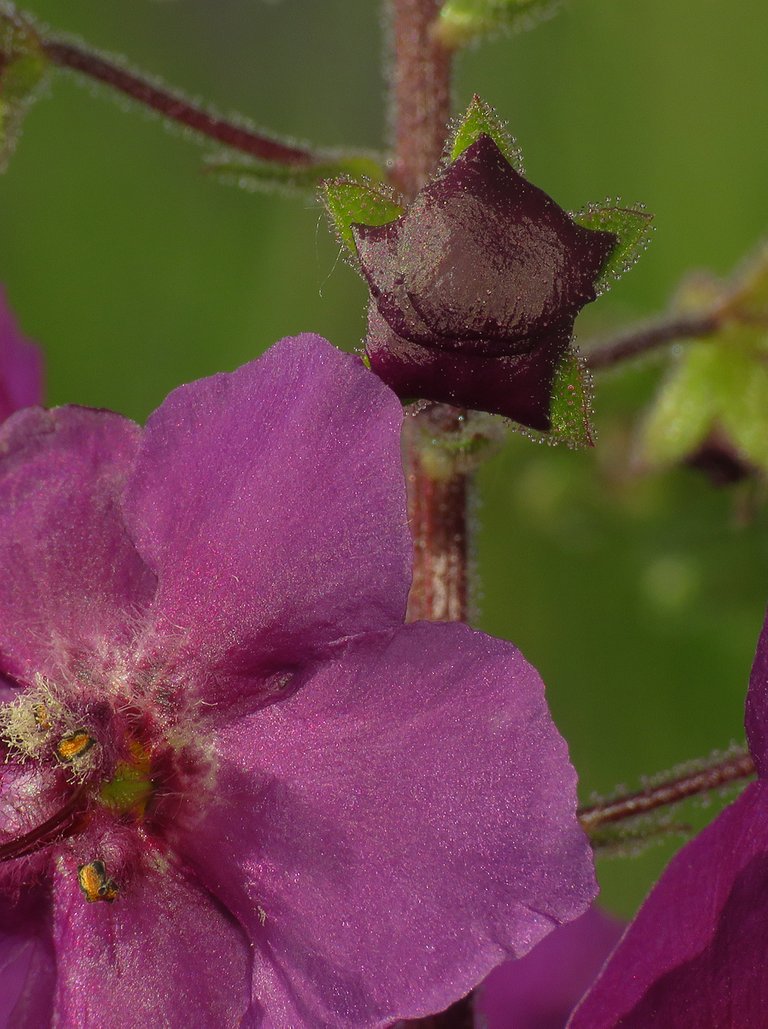
Verbascum phoeniceum is commonly known as the Purple mullein. The color of these flowers can vary from deep purple to pale pink and white. The plant is native to southern Europe, northern Africa, and central Asia, where it grows in dry, open spaces with plenty of sunlight.
this is just a wider view of the typical coastal meadow in springtime. In the following photograph ...
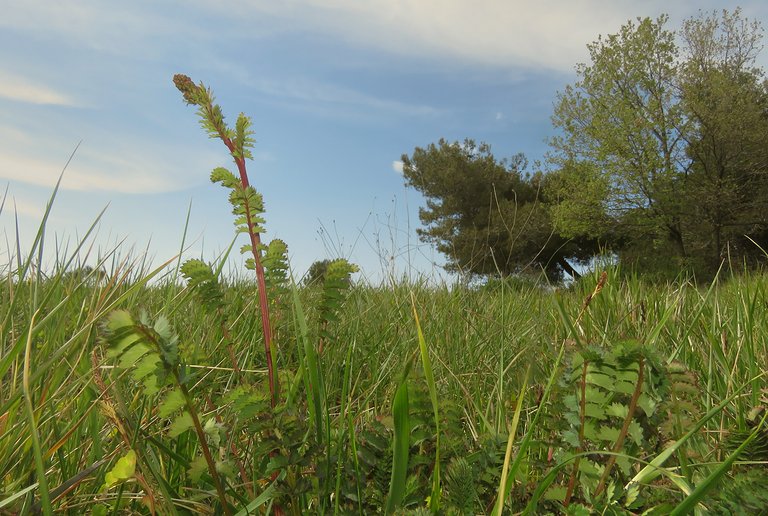
... the focus is on one specific plant on that meadow ...
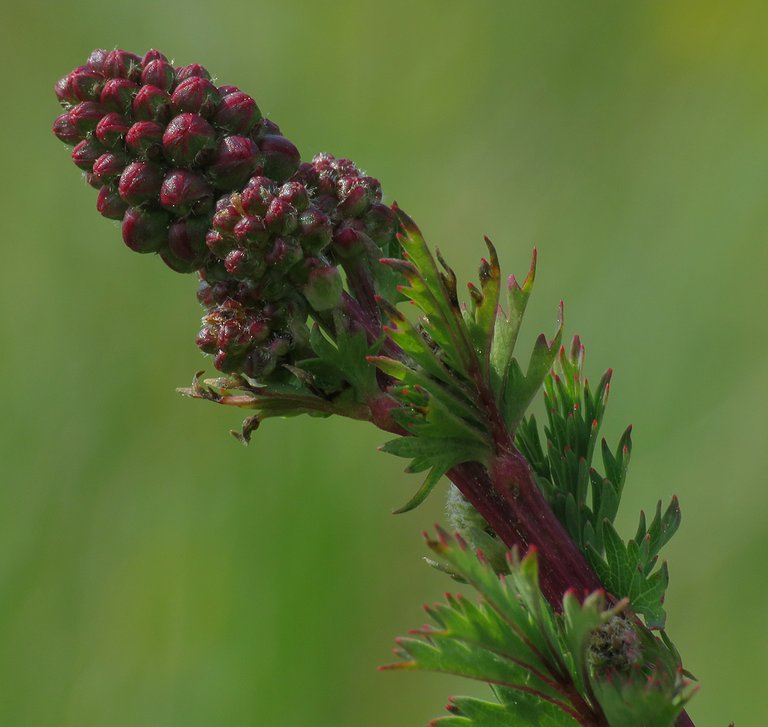
... the Poterium sanguisorba, commonly known as the Salad burnet. The tiny flowers that form clusters at the top of the plant weren't open when I took these photographs. If crushed or cut, the leaves of this edible plant smell like cucumber and make a great springtime salad when still young and soft. They get resilient and bitter as they grow, still edible but too difficult to chew and digest. In the past, Poterium sanguisorba has been used medicinally to control bleeding. In the previous two photographs, you probably noticed some trees in the background. Most of them are pines that typically grow along the meadows. In the following photograph ...
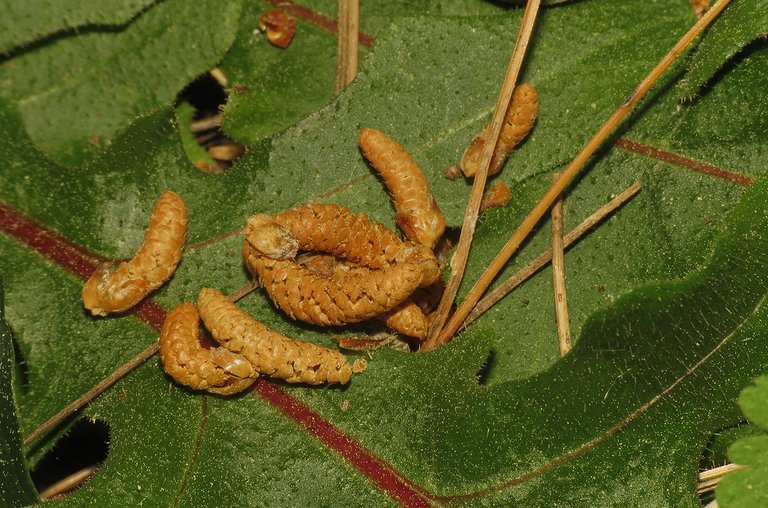
... you can see the small pollen cones that fell from those trees.
In this photograph, you can admire the lovely pattern made of those cones and the leaves of the Hypochaeris radicata plant. I didn't photograph the Hypochaeris radicata flowers on that occasion, but I can tell you that they look a lot like dandelions.
Sonchus oleraceus is another species with dandelion-like flowers. This plant is commonly known as the Common sowthistle.
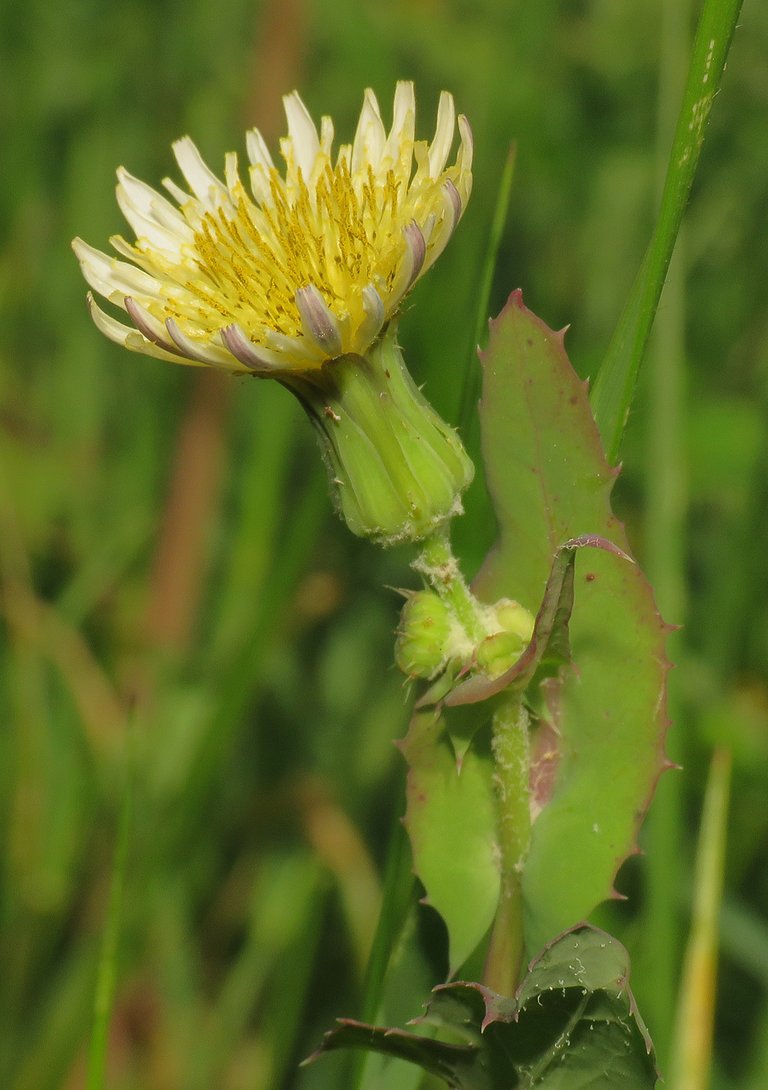
Sonchus oleraceus is edible.
Leaves can be eaten as a raw, green salad or cooked like spinach. They are soft, juicy, and delicious.
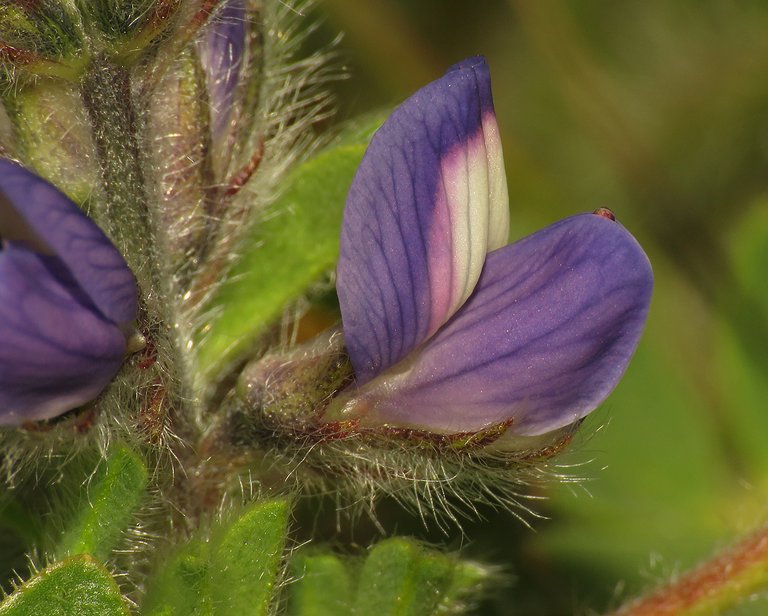
These are the Lupinus micranthus flowers.
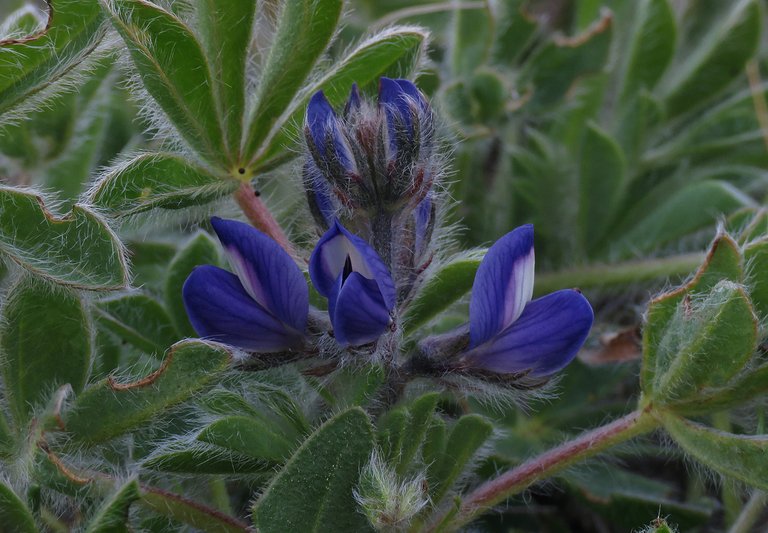
This hairy plant, commonly known as the Bitter blue lupin or Hairy lupin, is native to the Mediterranean part of Europe and some areas in northern Africa.
Among the many plants that I observed in the spring of 2021 ...
... this one is the most photographed.
In part because it's a very cool plant ...
... and in part, because the interesting shape of its flowers makes it difficult to show all the important characteristics in a single shot.
This is the Aristolochia rotunda, commonly known as the Smearwort or Round-leaved birthwort.
For their pollination, the flowers rely on midges and other small insects attracted by the smell and by the purple-brown color. The small hairs inside the cup prevent the insects from coming out quickly and flying away. The plant decides the time to leave. These hairs sag and allow them to escape only after the pollination is done.
This plant is poisonous in larger quantities, so it can't be used as food, but was, and still is used carefully and in small doses, for its medicinal properties. Mainly to treat a variety of skin problems.
Some Aristolochia rotunda leaves that I encountered back then, in May of this year ...
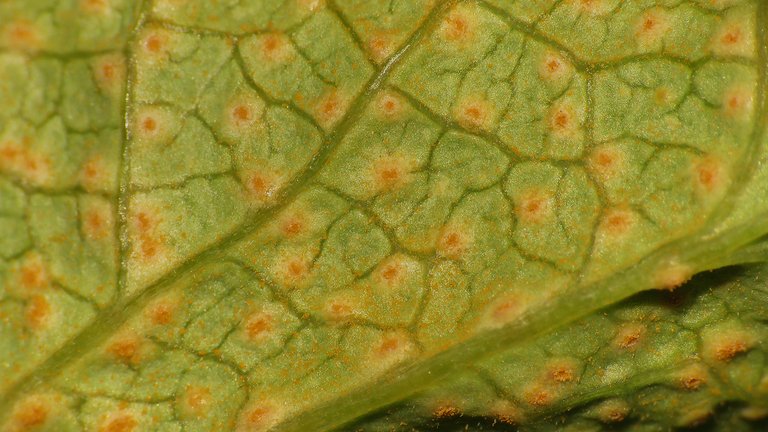
... were covered with orange powder and a multitude of orange spots that looked like minuscule volcanoes from which that powder is spread. It looked like some fungal disease.
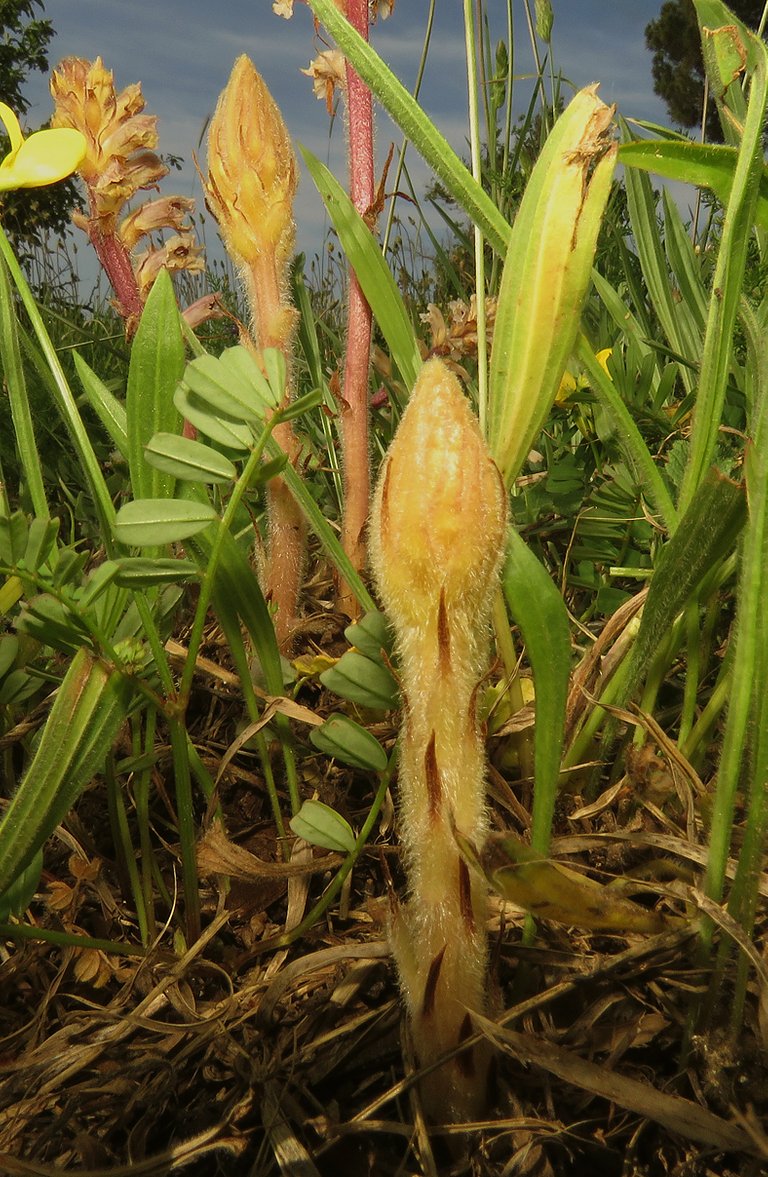
Here you can see another pretty peculiar species that grows on the meadows near the sea.
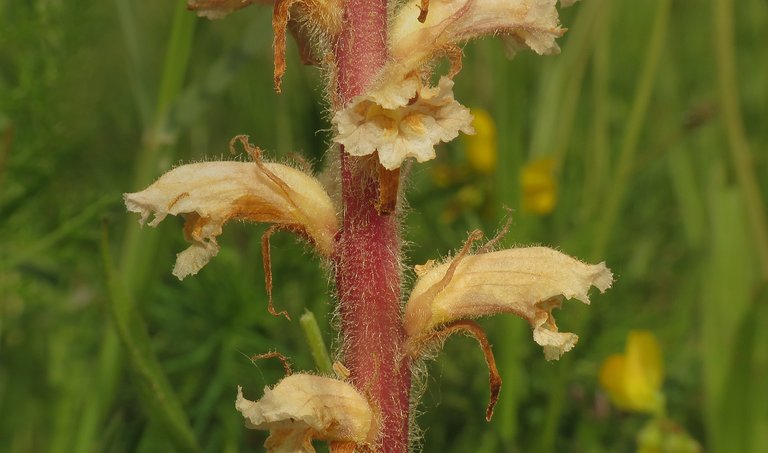
As its colors clearly show ...
... this plant is completely devoid of chlorophyll ...
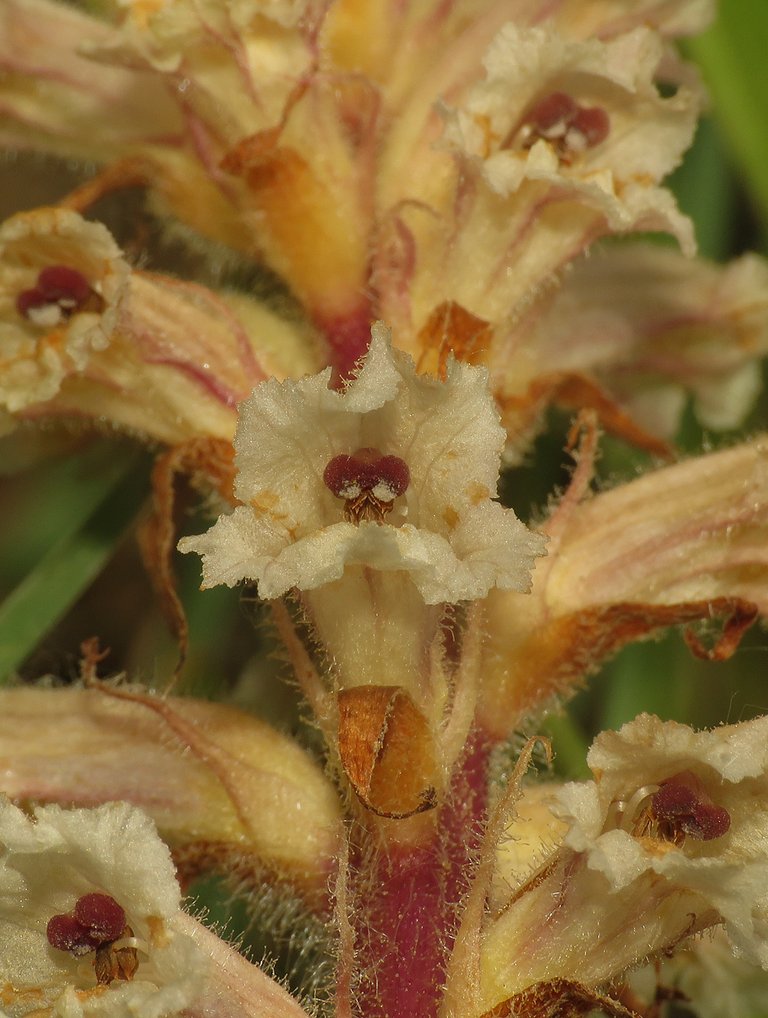
... which means that it can't produce the needed energy through photosynthesis.
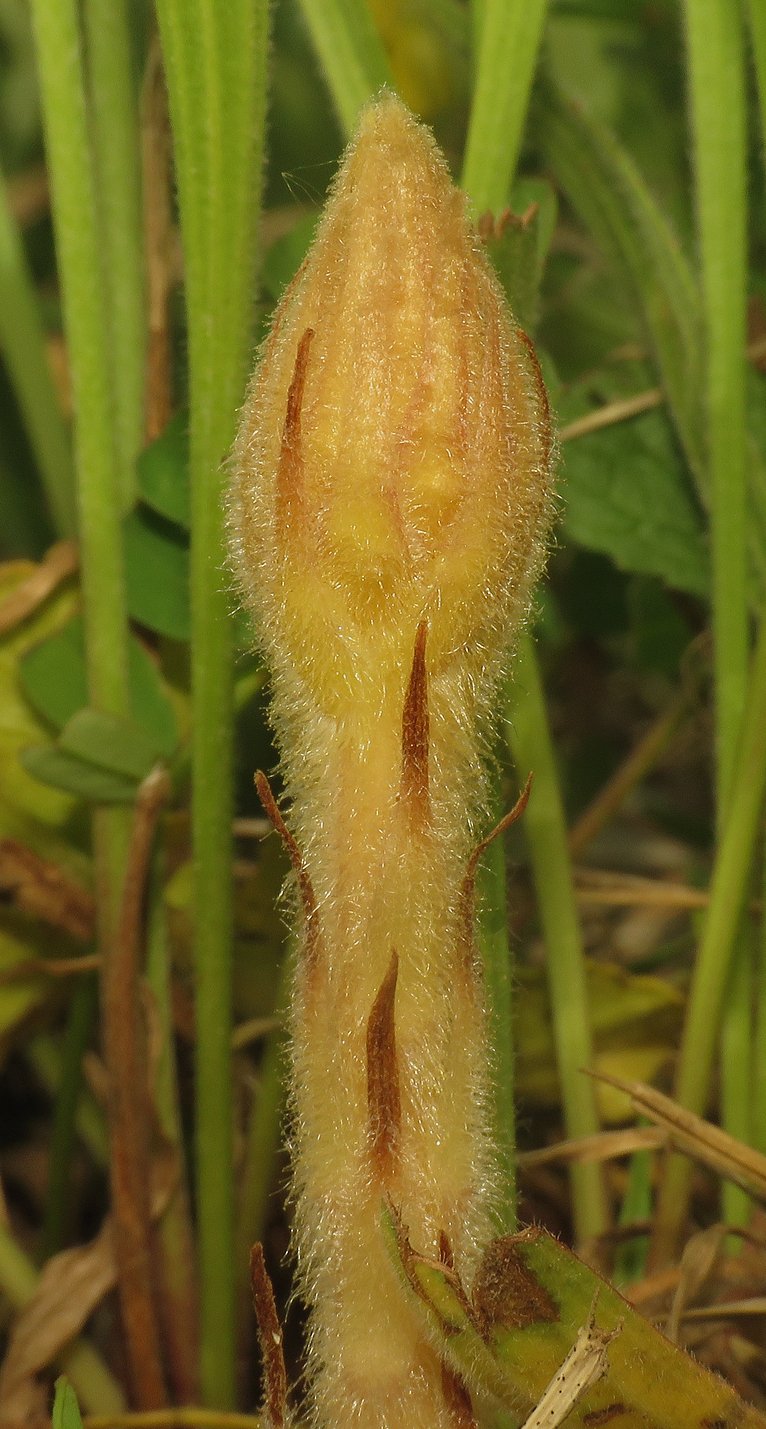
This plant, the Orobanche amethystea, it's a parasite, totally dependent on other plants for nutrients. Most plants of the Orobanchaceae family are commonly known as Broomrapes. Seeds of these parasitic plants remain dormant in the soil, often for many years, until stimulated to germinate by certain compounds produced by roots of green plants. Broomrape seedlings put out a root-like growth, which attaches to the roots of nearby hosts. Once attached to a host plant, the Broomrape robs its water and nutrients. In this photograph, you can see the fresh, young shoot of the Orobanche amethystea.
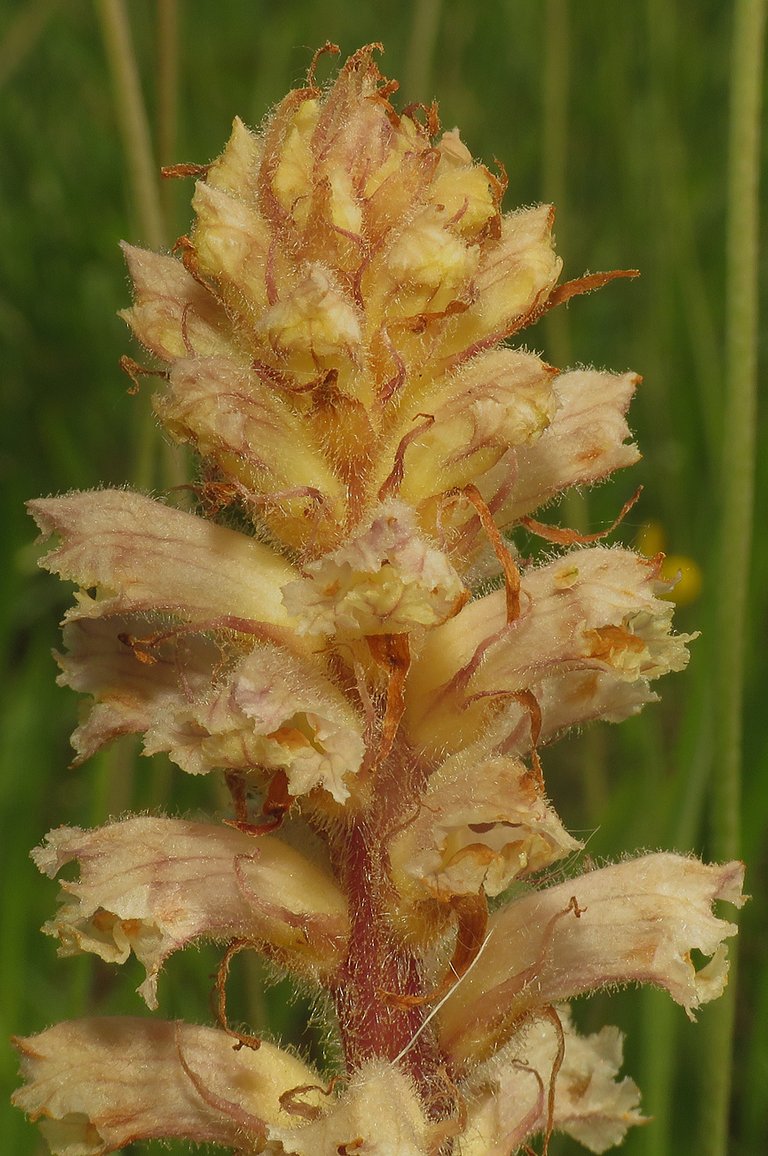
Here you can see the fully developed plant in bloom.
The colors of these flowers aren't intense and they produce very little nectar but are still able to attract various small pollen beetles that serve as pollinators.
This Broomrape species parasitizes mainly on the Eryngium campestre plant that grows in dry and sunny habitats.
Here you can see the small, inconspicuous flowers of the Lithospermum officinale plant.
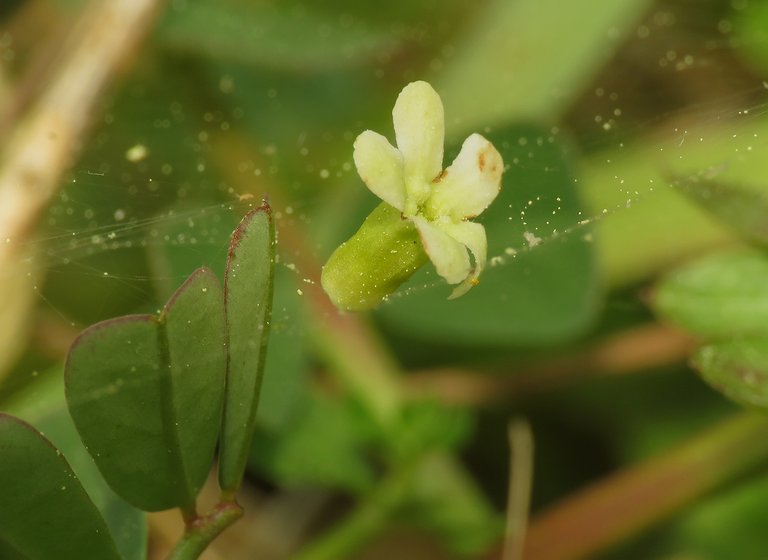
This flower has fallen and ended up caught in the threads produced by some spider or a caterpillar.
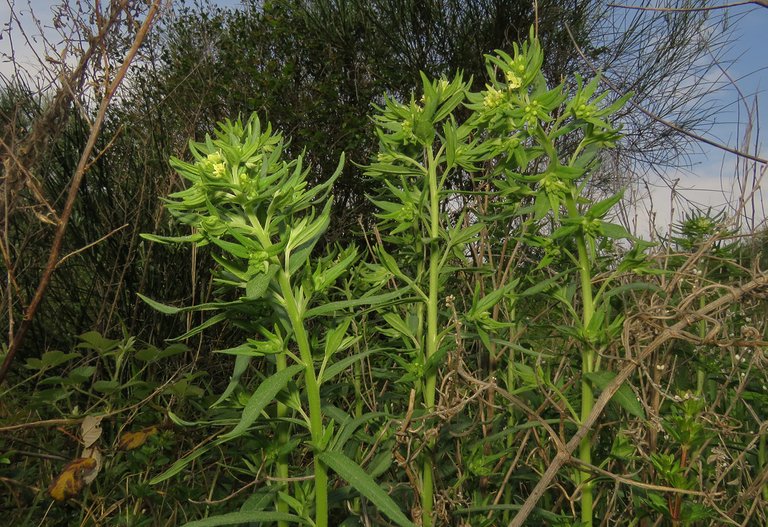
The Lithospermum officinale is commonly known as the Common gromwell or European stoneseed. While photographing these pretty tall, green, and juicy plants ...
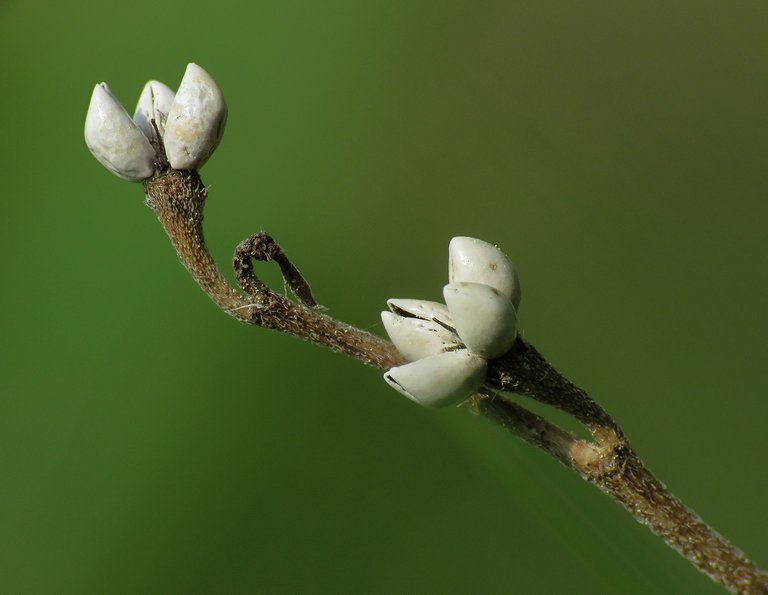
... I noticed a couple of dry ones nearby. These were also Lithospermum officinale ...
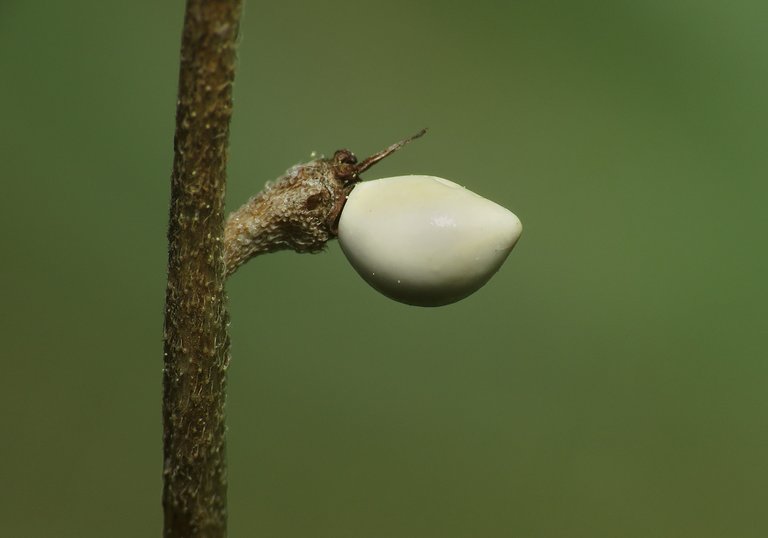
... and on them, I could see the seeds of this plant.
All parts of the plant have been traditionally used as natural remedies. The leaves as a sedative ...
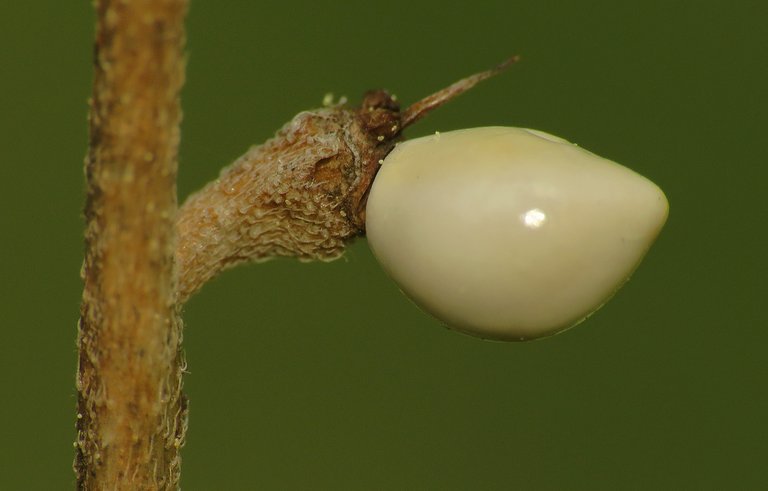
... and the lovely white seeds that look like porcelain or ivory beads, as an anti-inflammatory agent for the urinary and digestive tract.
these attractive flowers in the sea of lush green grass ...
... are the colorful part of the Oxalis articulata.
This plant is native to temperate regions of South America.
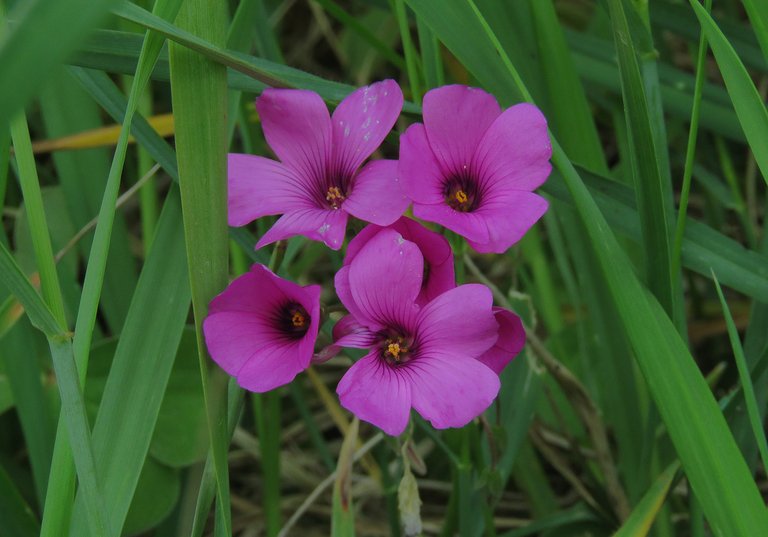
It was introduced in Europe as an ornamental garden plant, but now you can encounter it in shady, humid places under the trees or dense shrubs in non - cultivated areas.

Here you can see the beautiful, but very small flower ...
... of the Parentucellia latifolia plant.
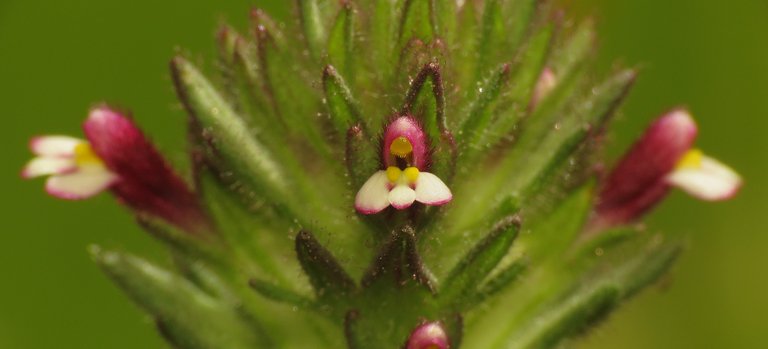
These tiny flowers can be really appreciated through a macro lens. Parentucellia latifolia, commonly known as the Red bartsia, Red tarweed, broadleaf glandweed, or Broad-leaved Eyebright it's a species from the Orobanchaceae family. It has chlorophyll, it's not completely dependent on other plants, but it enhances its water and nutrient supplies by parasitizing on various other species on the meadow. It's important to notice that if necessary, this partial parasite can grow and thrive without a host.
These flowers are also pretty small. Thymus serpyllum it's an aromatic plant with medicinal properties, great for herbal tea or for spicing food.
Here you can see the much larger blue flower of the Vinca major ...
... commonly known as the Greater periwinkle. This creeping plant native to the Mediterranean regions of Europe, Asia, and Africa can cover large patches of shrubs and other vegetation.
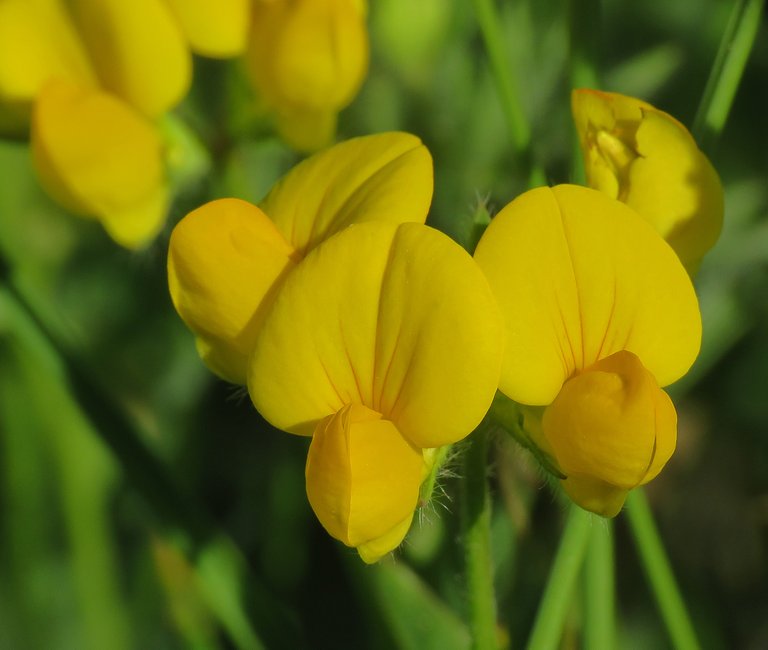
Here you can see the small, intensely yellow flowers ...
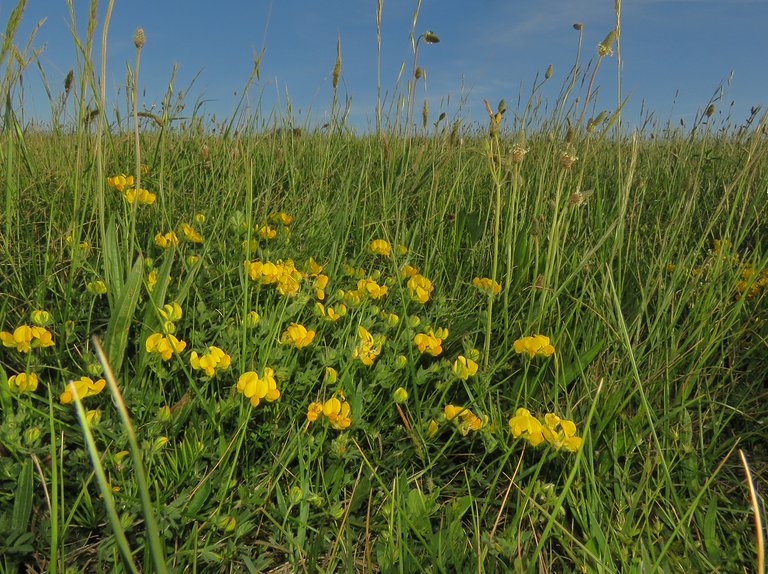
... of the Lotus corniculatus ...
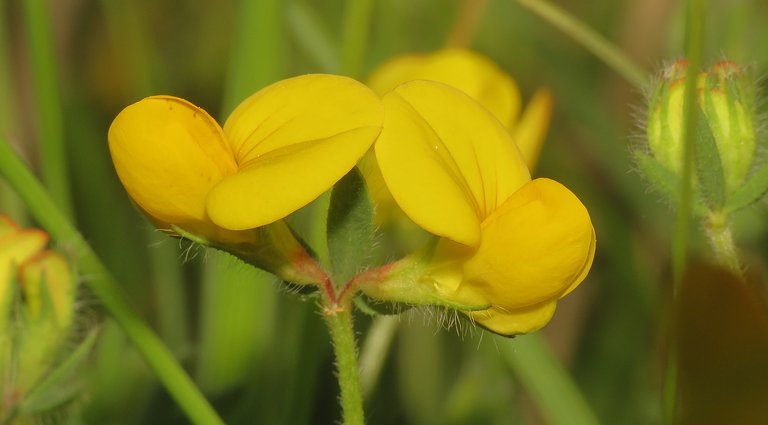
... commonly known as the Bird's-foot trefoil. Here you can see it growing wild near the sea, but this plant is often cultivated as a forage crop.
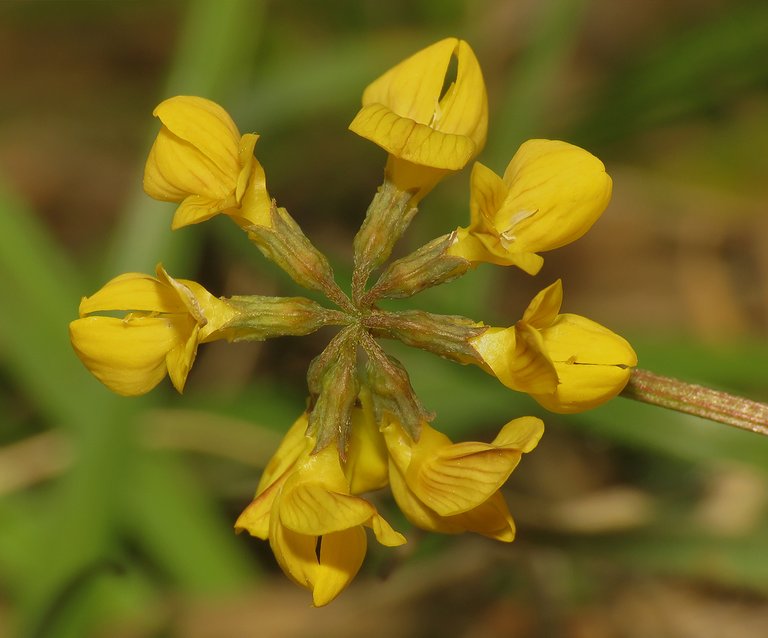
These similarly shaped yellow flowers belong to the Hippocrepis comosa, a plant commonly known as the Horseshoe vetch. This species from the Fabaceae family can be found only on chalk and limestone. It is a resilient plant that can easily survive long periods of cold, hot, or dry weather on poor soil.
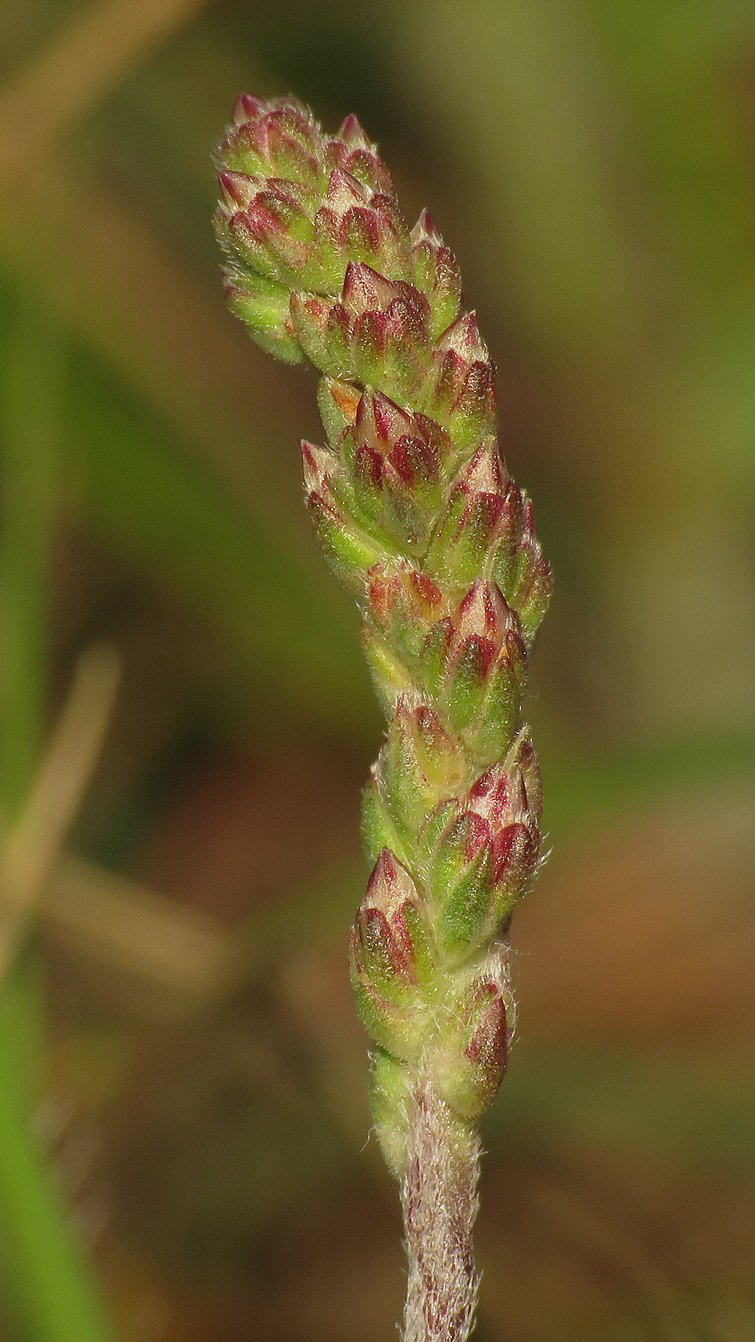
Here you can see the elongated flowerhead ...
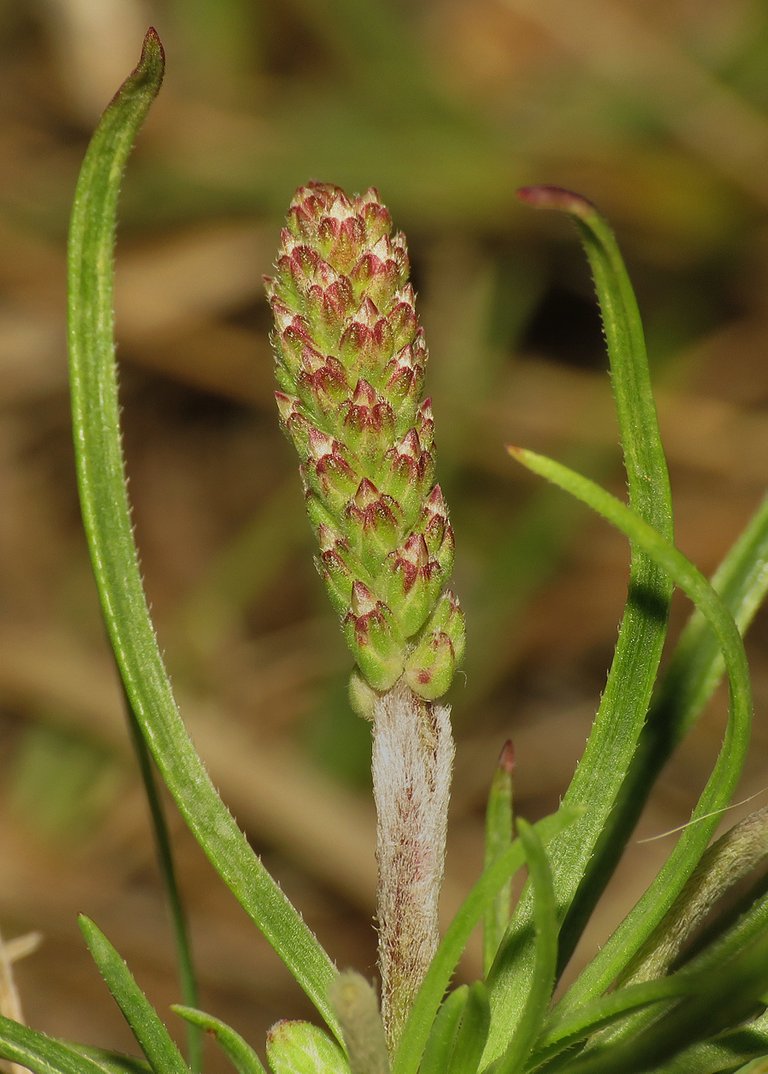
... of the Plantago coronopus plant.
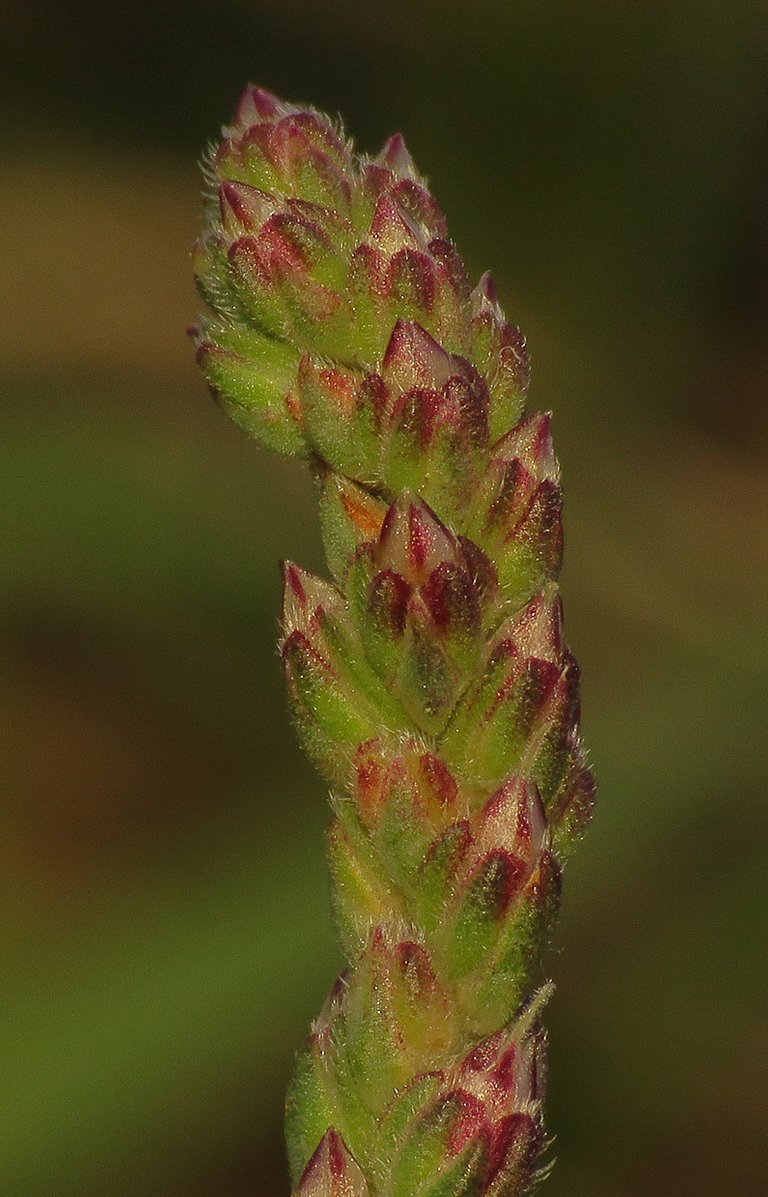
These tiny flowers aren't open yet.
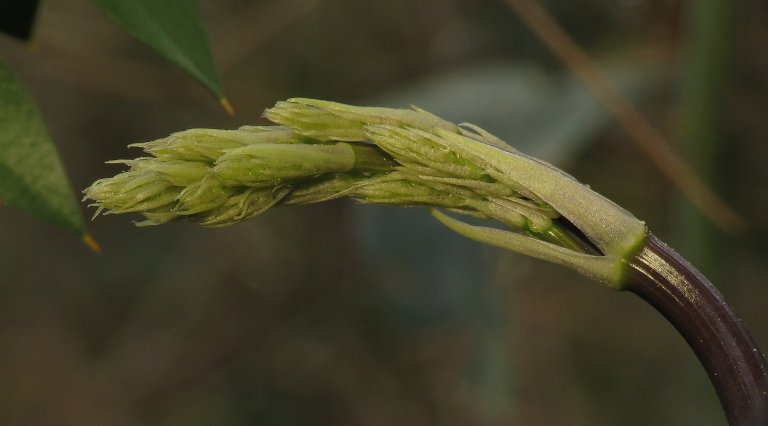
This is the juicy, young shoot of the Ruscus aculeatus plant.
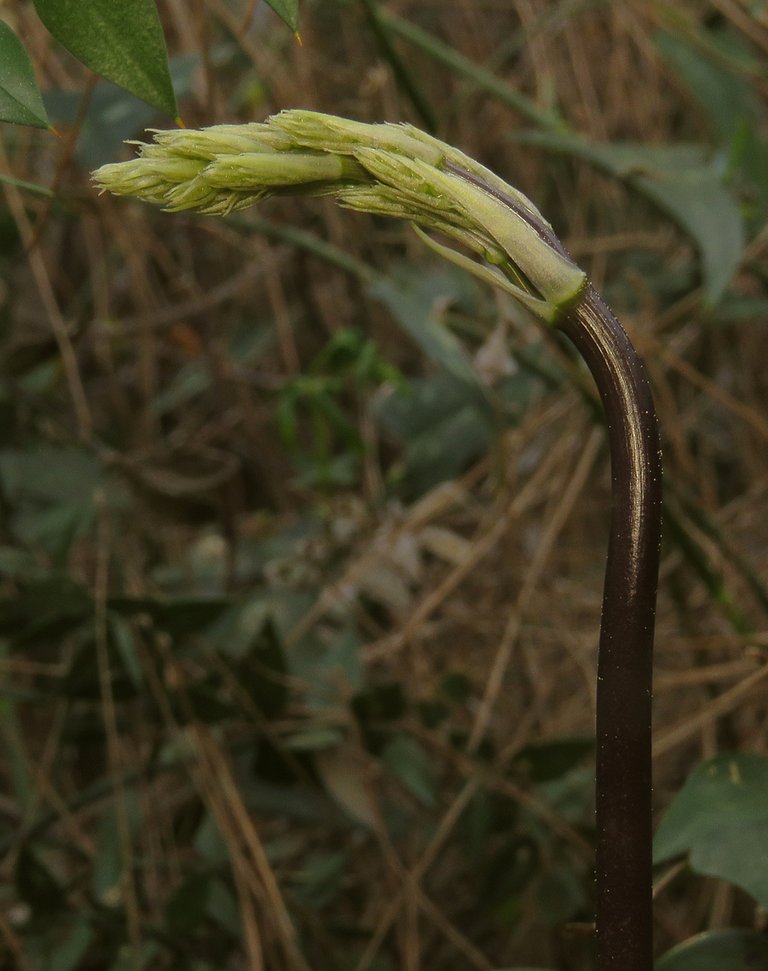
When completely developed, this plant forms a dense growth of hard, resilient shrubs filled with annoying thorns. But at this stage, the shoots are juicy and edible, very healthy, with a great, distinctive aroma.
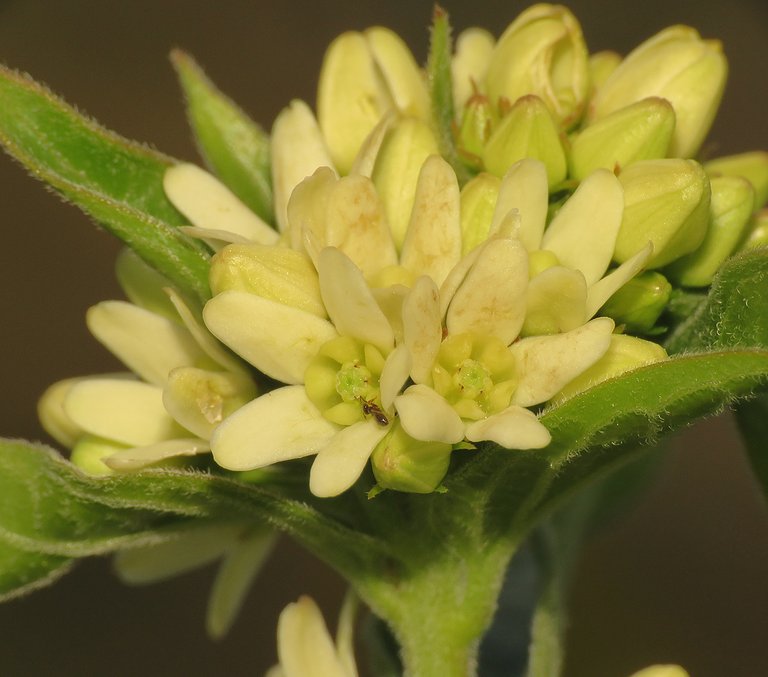
Here you can see the flowers of the Vincetoxicum hirundinaria plant.
While I was busy taking these photographs, a minuscule Crematogaster auberti ant was enjoying the nectar of this venomous plant.
This is the Euphorbia cyparissias, commonly known as the Cypress spurge, and on the following photograph ...
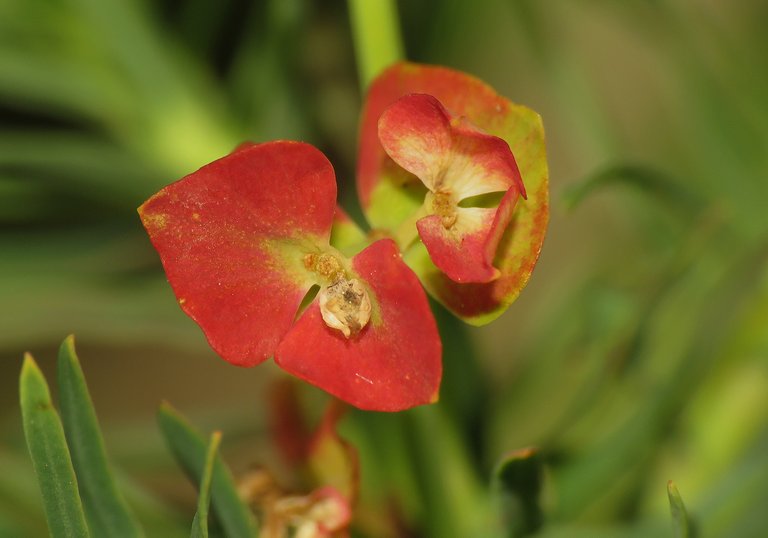
... you can take a look at a different-looking detail photographed on the same kind of plant.

This is also Euphorbia cyparissias plant, but near the end of the blooming time, the floral parts have changed. I'm talking about floral parts instead of saying flowers plain and simple because the spurges have pretty peculiar flowers that are hard to describe with usual words. They don't have sepals, petals, or classic nectaries to attract pollinators, so other non-flower parts of the plant have an appearance and nectar glands with similar roles.
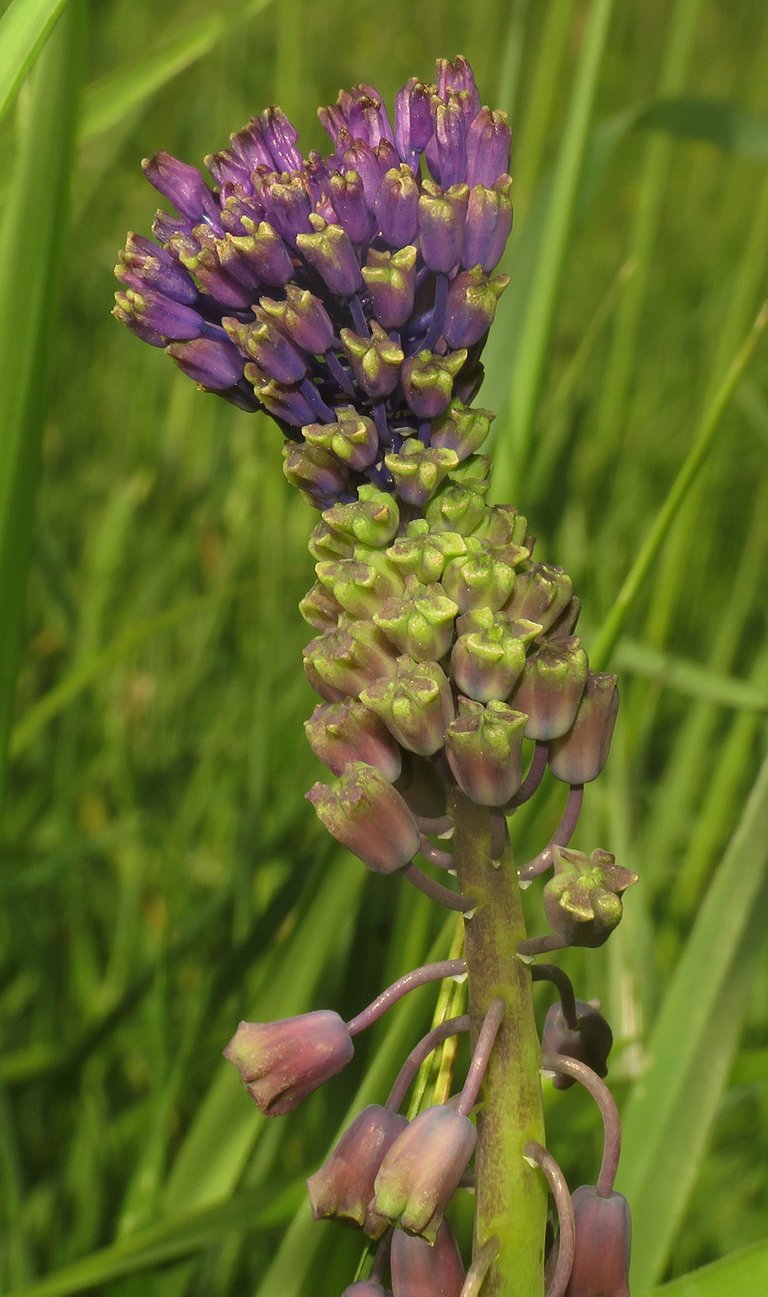
here you can see the almost opened flowers of the Muscari comosum plant.
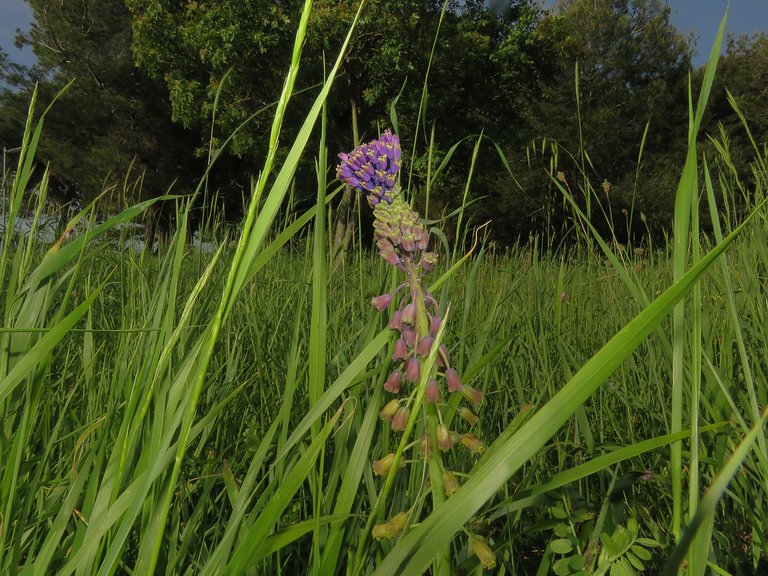
This lovely plant is commonly known as the Grape hyacinth. The bulb of the plant is a culinary delicacy. I never tried it, so can't tell you anything from personal experience.
These are the small blue flowers of the Veronica arvensis plant.
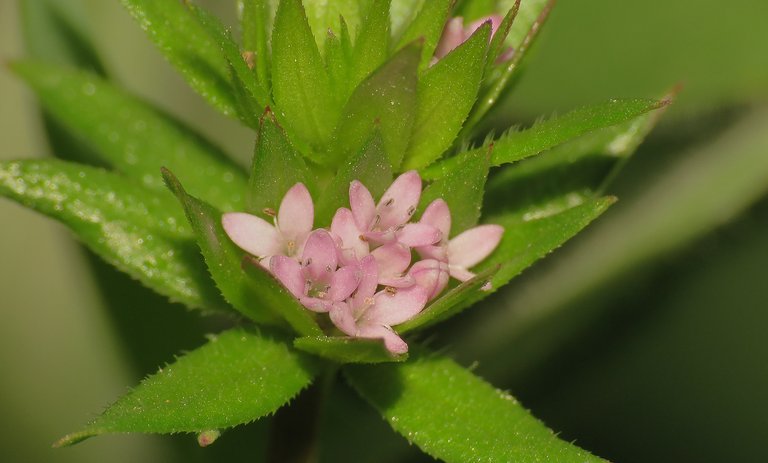
These flowers are even smaller.
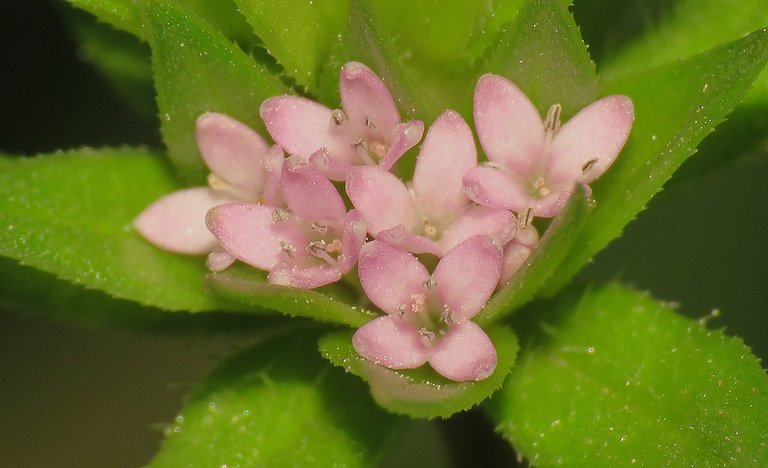
Sherardia arvensis is the name of the plant.
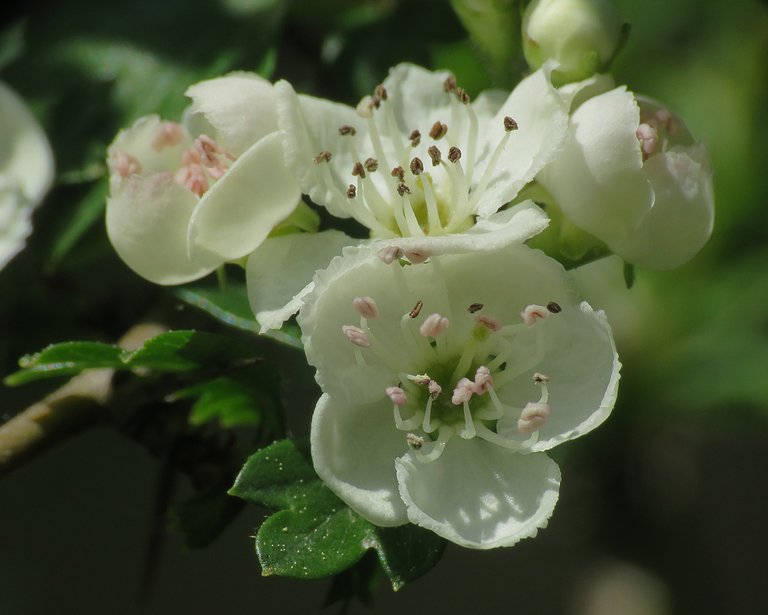
These are the Common hawthorn flowers (Crataegus monogyna), and with them, this post has come to an end. Hope you enjoyed the springtime journey.
As always in these posts on HIVE, the photographs are my work - THE END.
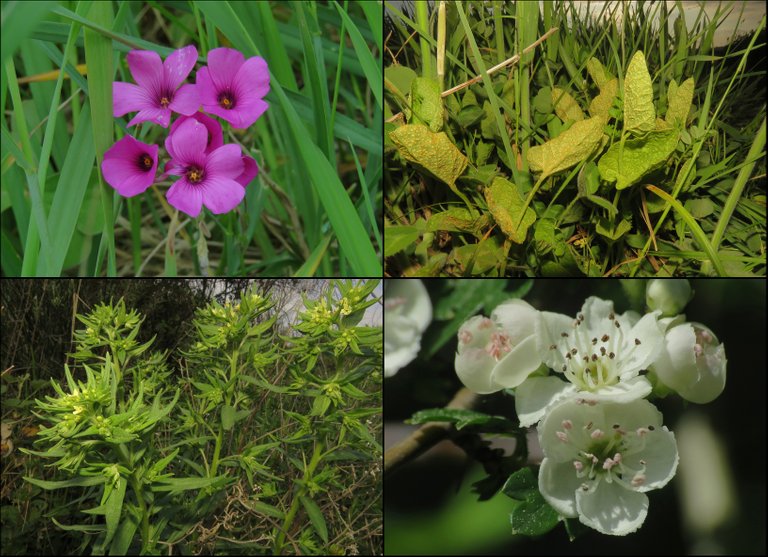
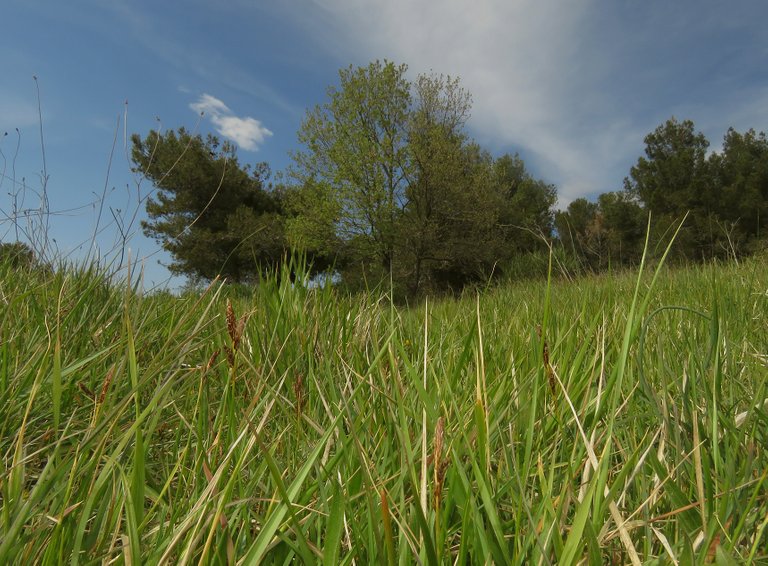
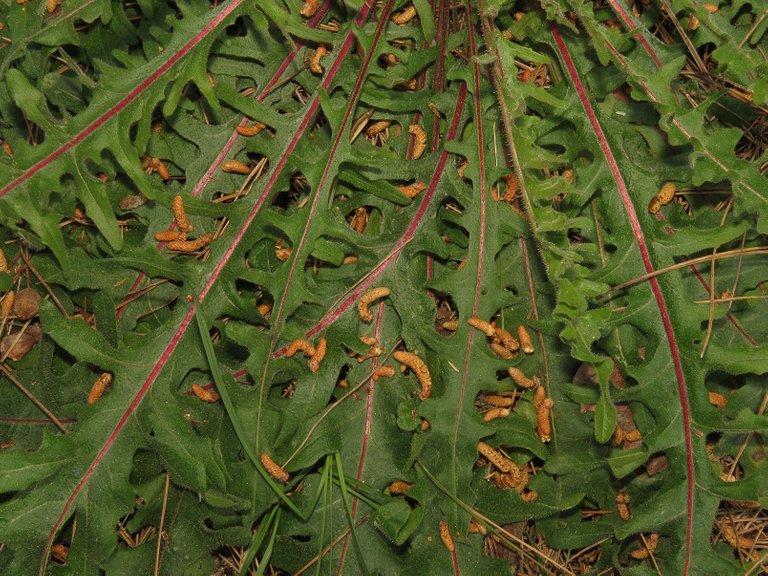
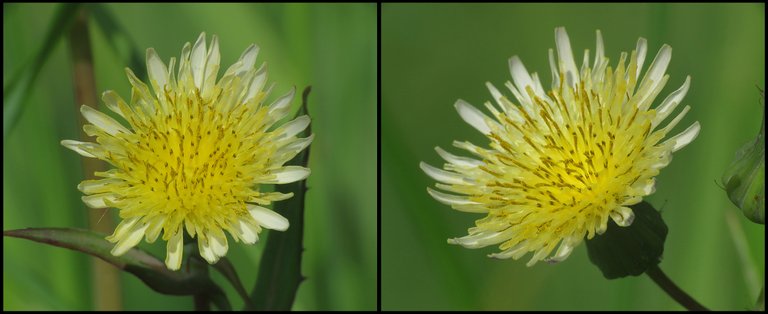

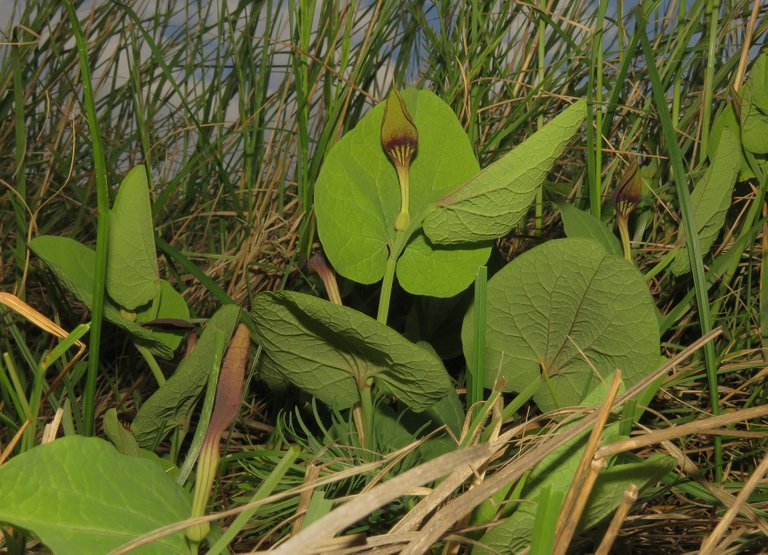


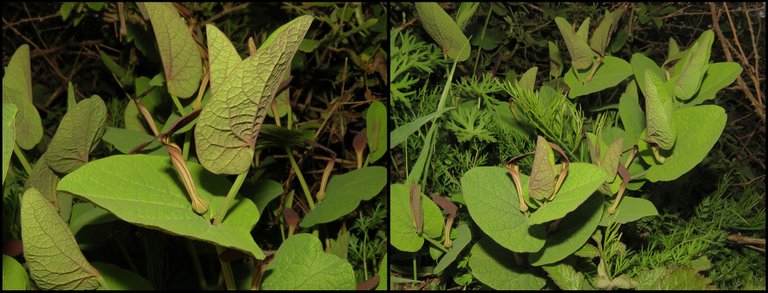

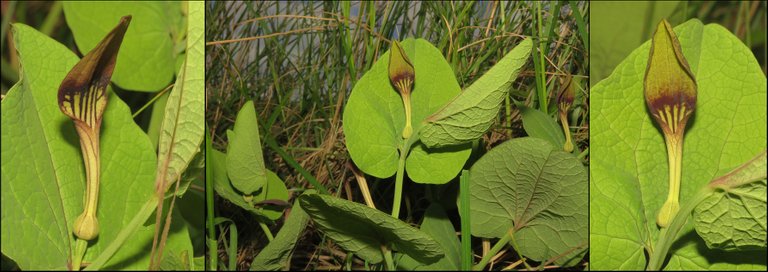
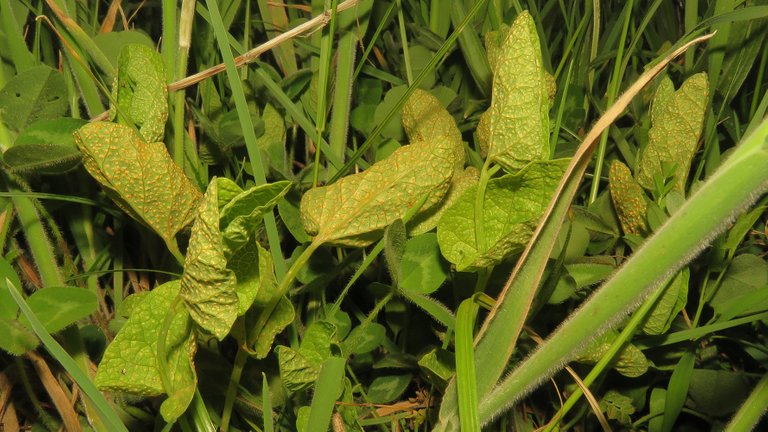

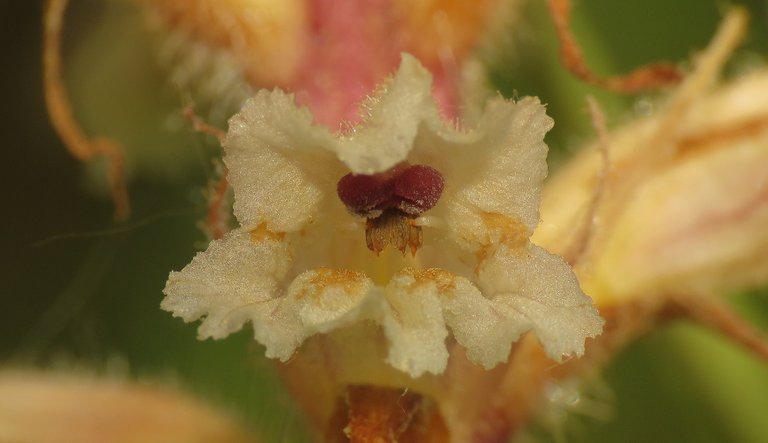


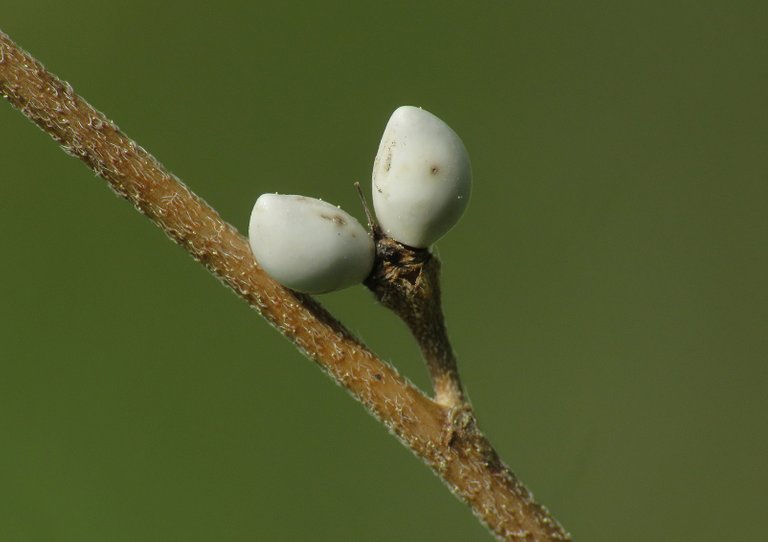
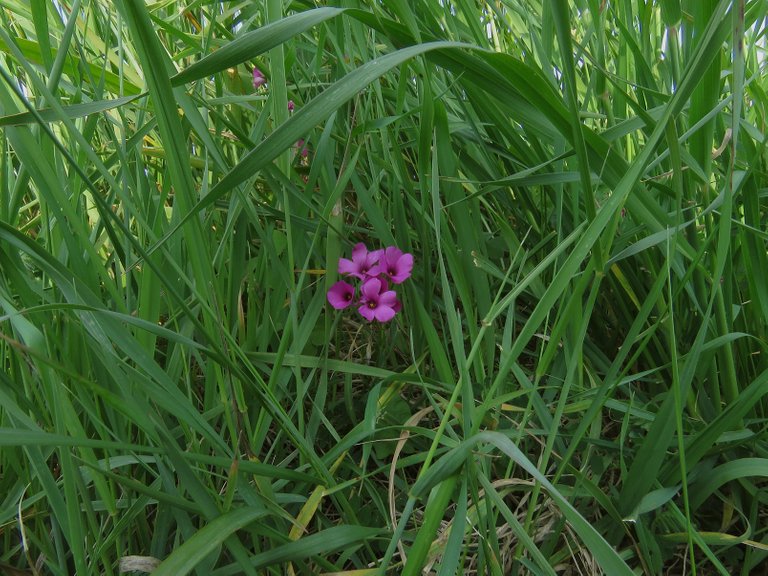

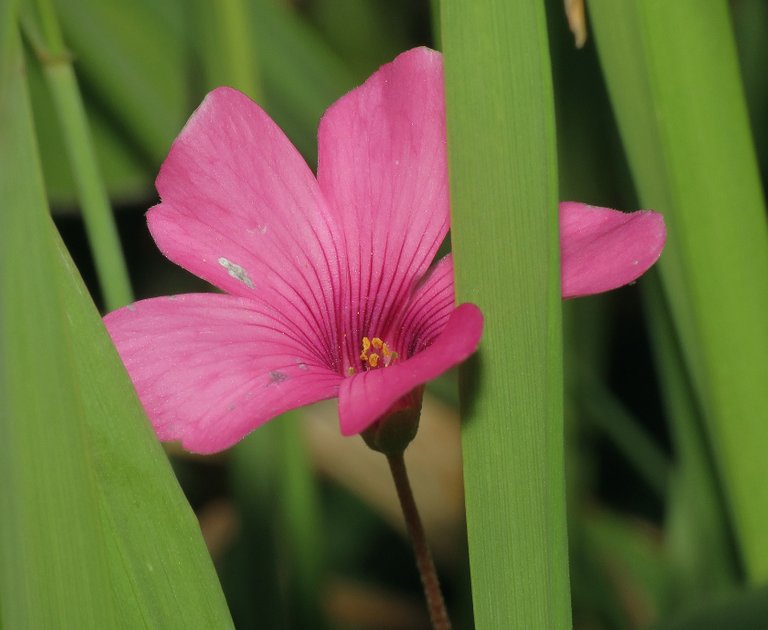

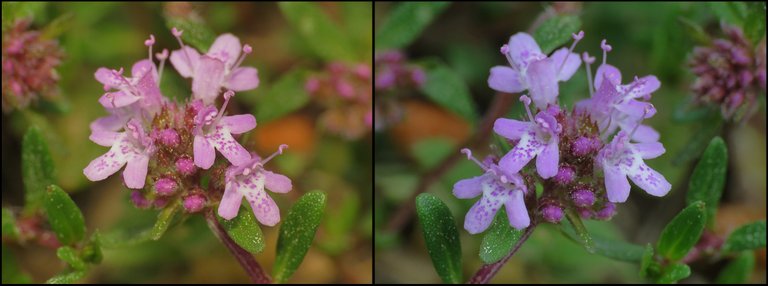
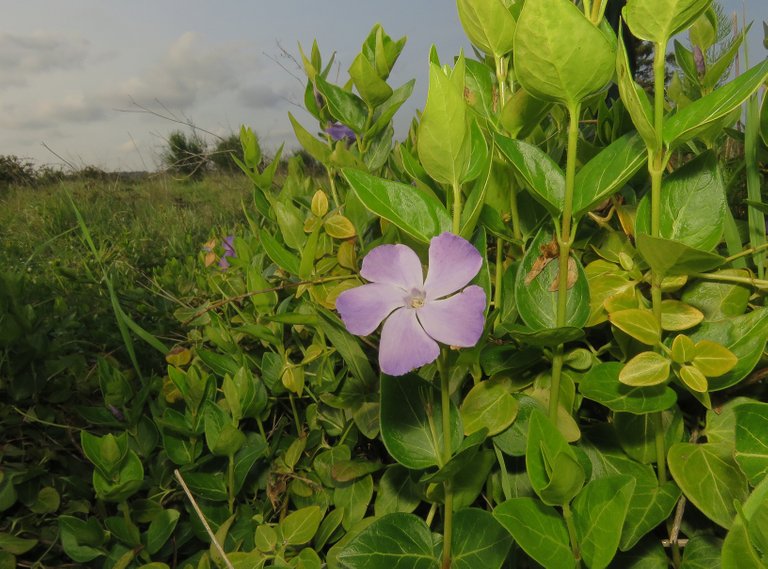
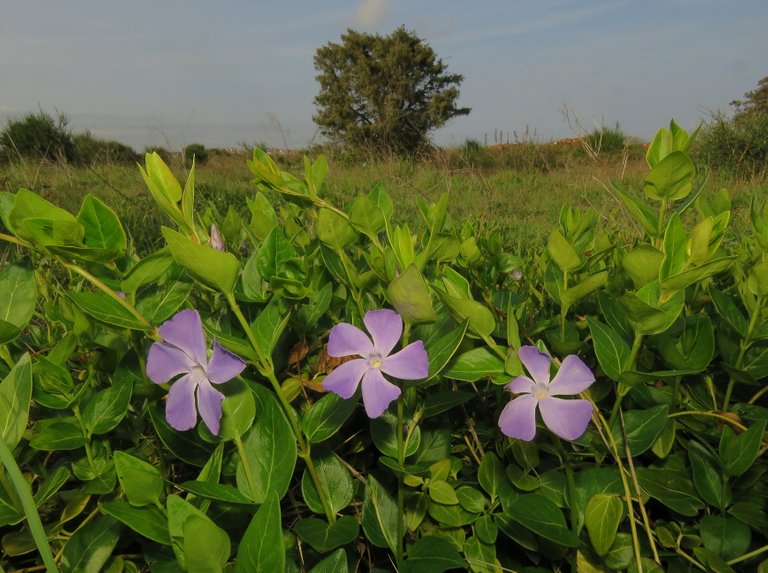

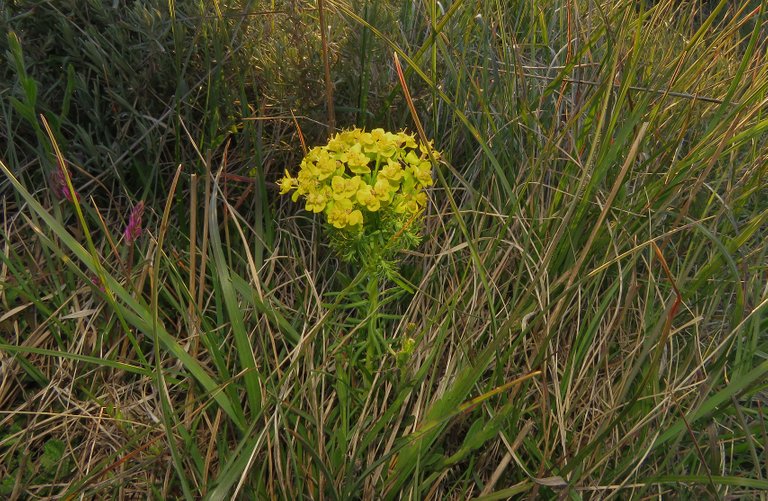

We appreciate your hard work and dedication, your post has been manually curated on behalf of the community PETALS it will be added to the weekly curation report. Thanks and keep up the good work !!
Thank you :)
Congratulations @borjan! You have completed the following achievement on the Hive blockchain and have been rewarded with new badge(s):
You can view your badges on your board and compare yourself to others in the Ranking
If you no longer want to receive notifications, reply to this comment with the word
STOPCheck out the last post from @hivebuzz:
!BEER
I hope next Spring will come soon! Best time of the year.
I agree :)
The Aristolochia rotunda leaves have what is called rust here. It mainly affects mallows on the farm.
A wonderful breath of spring on a cold winter's eve. I loved looking at all the flowers and learning their names and properties. Very nice!
Delightful walk in the spring meadow:)
Glad you like this springtime excursion. :)
Lovely pictures as always that with a pentagon shape is that a flower as well, it's really beautiful.
Such gorgeous flowers and so interesting to read about them
hi friend @borjan all the pictures you show this time look very clear and clean, this is indeed amazing,
Thank you :)
Hello @borjan. Incredible work, I lost count of how many species of plants and flowers appear in the publication. Thanks for sharing with the community.
I have never seen any flowers posted in this post in person, maybe in my place this rare flower doesn't even exist at all. The flowers are really very beautiful.
Maybe you are in a different part of the world where different rare flowers grow :)
I agree
What a beautiful sight to behold.
Beautiful flowers
Wow.. amazingly awesome, photos are very beautiful to look at. I really like the flowers you display, very good job @borjan 👍👍
Wow! You found some wonderful flowers. Most of whose flowers I don't think I've ever seen before. You have brought the beauty of nature to us in a wonderful way. Thanks
wow some of these flowers look beautiful and amazing, and thank you so much for sharing some of these amazing flowers...
I think I've come across this plant @borjan. But I don't like it because it's very itchy😢
Which one exactly? :) There are a few different plants here.
View or trade
BEER.Hey @borjan, here is a little bit of
BEERfrom @dzoji for you. Enjoy it!Did you know that you can use BEER at dCity game to **buy dCity NFT cards** to rule the world.